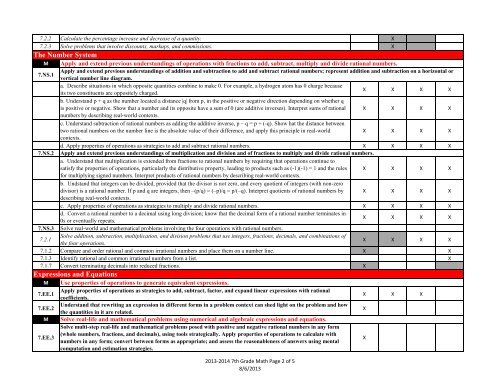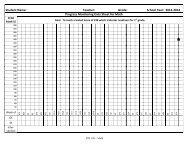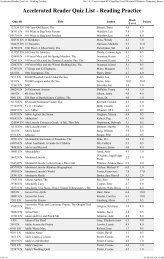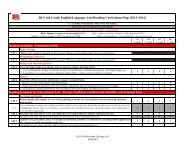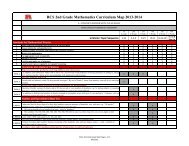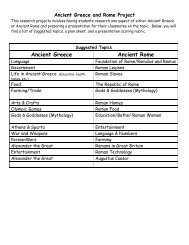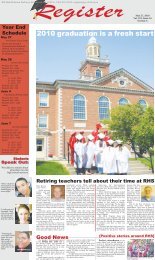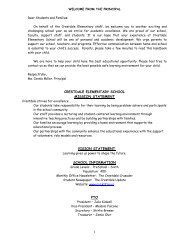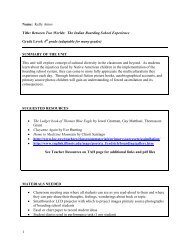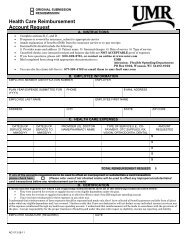2013-2014 Math Grade 7.pdf
2013-2014 Math Grade 7.pdf
2013-2014 Math Grade 7.pdf
Create successful ePaper yourself
Turn your PDF publications into a flip-book with our unique Google optimized e-Paper software.
7.2.2 Calculate the percentage increase and decrease of a quantity. X<br />
7.2.3 Solve problems that involve discounts, markups, and commissions. X<br />
The Number System<br />
M<br />
7.NS.1<br />
Apply and extend previous understandings of operations with fractions to add, subtract, multiply and divide rational numbers.<br />
Apply and extend previous understandings of addition and subtraction to add and subtract rational numbers; represent addition and subtraction on a horizontal or<br />
vertical number line diagram.<br />
a. Describe situations in which opposite quantities combine to make 0. For example, a hydrogen atom has 0 charge because<br />
its two constituents are oppositely charged.<br />
X X X X<br />
b. Understand p + q as the number located a distance |q| from p, in the positive or negative direction depending on whether q<br />
is positive or negative. Show that a number and its opposite have a sum of 0 (are additive inverses). Interpret sums of rational X X X X<br />
numbers by describing real-world contexts.<br />
c. Understand subtraction of rational numbers as adding the additive inverse, p – q = p + (-q). Show hat the distance between<br />
two rational numbers on the number line is the absolute value of their difference, and apply this principle in real-world<br />
X X X X<br />
contexts.<br />
d. Apply properties of operations as strategies to add and subtract rational numbers. X X X X<br />
7.NS.2 Apply and extend previous understandings of multiplication and division and of fractions to multiply and divide rational numbers.<br />
a. Understand that multiplication is extended from fractions to rational numbers by requiring that operations continue to<br />
satisfy the properties of operations, particularly the distributive property, leading to products such as (-1)(-1) = 1 and the rules X X X X<br />
for multiplying signed numbers. Interpret products of rational numbers by describing real-world contexts.<br />
b. Undstand that integers can be divided, provided that the divisor is not zero, and every quotient of integers (with non-zero<br />
divisor) is a rational number. If p and q are integers, then –(p/q) = (–p)/q = p/(–q). Interpret quotients of rational numbers by X X X X<br />
describing real-world contexts.<br />
c. Apply properties of operations as strategies to multiply and divide rational numbers. X X X X<br />
d. Convert a rational number to a decimal using long division; know that the decimal form of a rational number terminates in<br />
0s or eventually repeats.<br />
X X X X<br />
7.NS.3 Solve real-world and mathematical problems involving the four operations with rational numbers.<br />
7.2.1<br />
Solve addition, subtraction, multiplication, and division problems that use integers, fractions, decimals, and combinations of<br />
the four operations.<br />
X X X X<br />
7.1.2 Compare and order rational and common irrational numbers and place them on a number line. X X<br />
7.1.3 Identify rational and common irrational numbers from a list. X<br />
7.1.7 Convert terminating decimals into reduced fractions. X<br />
Expressions and Equations<br />
M<br />
7.EE.1<br />
7.EE.2<br />
M<br />
7.EE.3<br />
Use properties of operations to generate equivalent expressions.<br />
Apply properties of operations as strategies to add, subtract, factor, and expand linear expressions with rational<br />
coefficients.<br />
Understand that rewriting an expression in different forms in a problem context can shed light on the problem and how<br />
the quantities in it are related.<br />
Solve real-life and mathematical problems using numerical and algebraic expressions and equations.<br />
Solve multi-step real-life and mathematical problems posed with positive and negative rational numbers in any form<br />
(whole numbers, fractions, and decimals), using tools strategically. Apply properties of operations to calculate with<br />
numbers in any form; convert between forms as appropriate; and assess the reasonableness of answers using mental<br />
computation and estimation strategies.<br />
<strong>2013</strong>-<strong>2014</strong> 7th <strong>Grade</strong> <strong>Math</strong> Page 2 of 5<br />
8/6/<strong>2013</strong><br />
X X X<br />
X<br />
X


